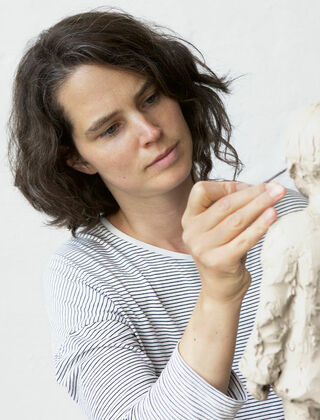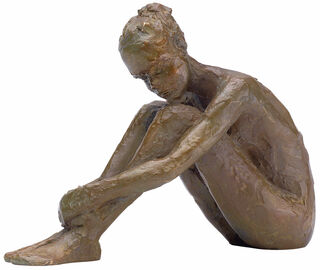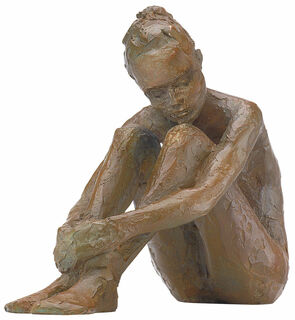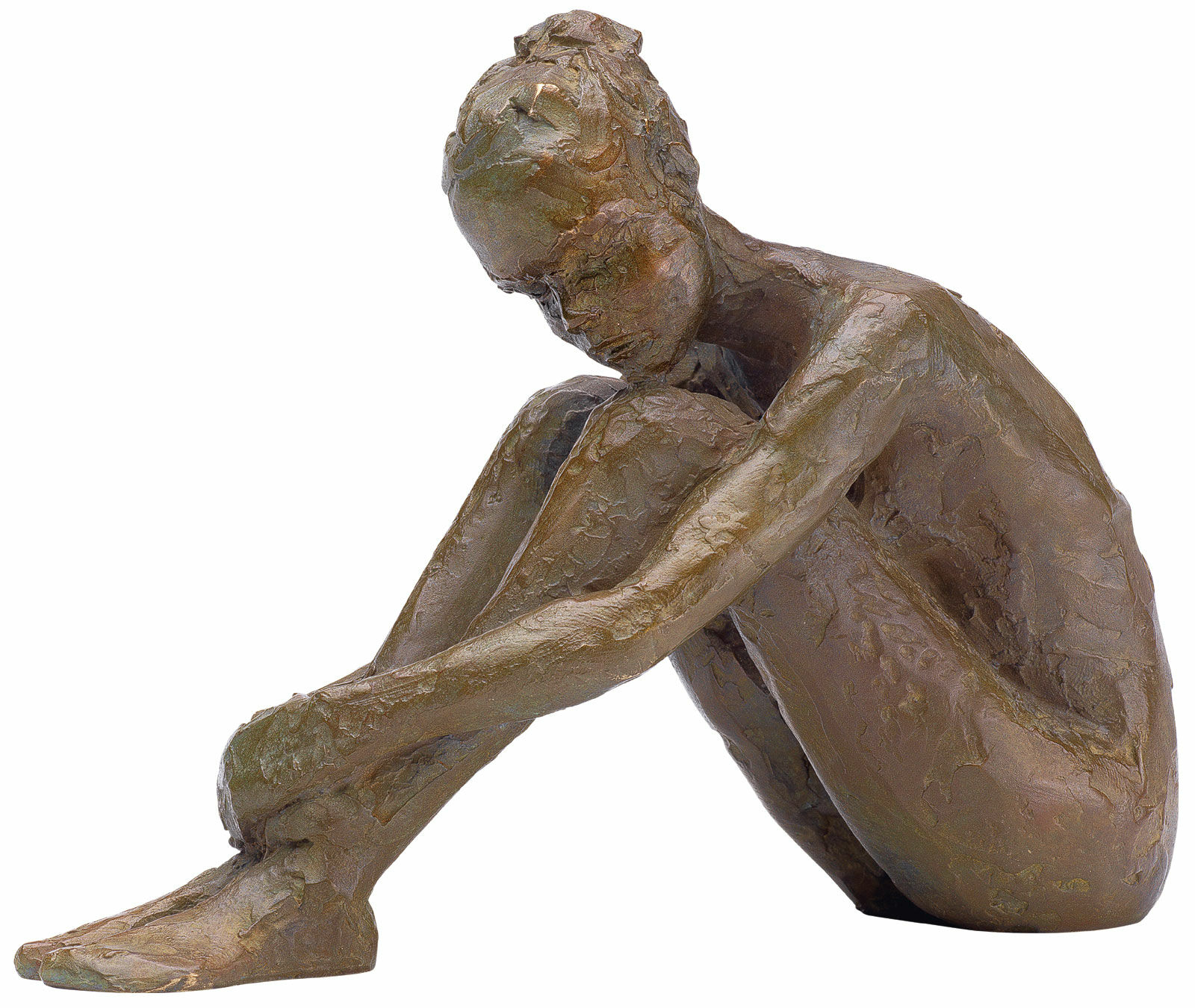Sculpture "Inner Peace", bronze
Sculpture "Inner Peace", bronze
Quick info
ars mundi Exclusive Edition | limited, total 109 copies | numbered | signed | certificate | bronze | chased | patinated | size 13 x 17 x 7 cm (h/w/d) | weight 1.7 kg
Video
Detailed description
Sculpture "Inner Peace", bronze
With this subtle character study of a woman lost in thought, the Berlin artist has captured a contemplative moment with an inherent calming aura.
Edition in bronze, cast using the Lost-Wax-Process, chiselled by hand, polished and patinated. Limited edition 99 copies + 10 E.A. copies Arabic numbered and signed. With certificate. Size 13 x 17 x 7 cm (h/w/d). Weight 1.7 kg. ars mundi Exclusive Edition.

About Valerie Otte
Insight into the human soul
Otte's art can be described as a play of the eyes at distance, which is a classical description for figurative sculpture. The rule: Close observation. In her works, the artist translates everything that she saw in the world as a quiet emotion, a small gesture or a moment of truthfulness. The viewer then "reads" these traces cast in bronze and soon no longer sees mere sculptures but personalities. It is a game that educates - not only for art but also for the world.
Valerie Otte (born in 1977) studied sculpture and art history in London and Berlin. She followed up with a diploma in product design in Potsdam – this path describes perfectly the approach and versatility of her work.
Otte's work as a sculptor in her Berlin studio is primarily figurative. Her bronze figures are rarely actually portraits (although she has made and continues to make some portraits from models). They are sensitive character studies of great emotional and psychological depth, which allow the viewer an insight into their inner lives without exaggerated "posing", simply through quiet suggestion and barely perceptible gesture. In the process, Otte's figures usually rest within themselves so that the viewer almost believes witnessing an intimate moment.
An alloy of copper with other metals (especially with tin) used since ancient times.
When casting bronze, the artist usually applies the lost-wax technique which is dating back more than 5000 years. It's the best, but also the most complex method of producing sculptures.
First, the artist forms a model of his sculpture. It is embedded in a liquid silicone rubber mass. Once the material has solidified, the model is cut out. The liquid wax is poured into the negative mould. After cooling down, the wax cast is removed from the mould, provided with sprues and dipped into ceramic mass. The ceramic mass is hardened in a kiln, whereby the wax flows out (lost mould).
Now we finally have the negative form, into which the 1400° C hot molten bronze is poured. After the bronze had cooled down, the ceramic shell is broken off and the sculpture is revealed.
Now the sprues are removed, the surfaces are polished, patinated and numbered by the artist himself or, to his specifications, by a specialist. Thus, each casting becomes an original work.
For lower-quality bronze castings, the sand casting method is often used which, however, does not achieve the results of a more complex lost-wax technique in terms of surface characteristics and quality.
Graphic or sculpture edition that was initiated by ars mundi and is available only at ars mundi or at distribution partners licensed by ars mundi.
A plastic work of sculptural art made of wood, stone, ivory, bronze or other metals.
While sculptures from wood, ivory or stone are made directly from the block of material, in bronze casting a working model is prepared at first. Usually, it is made of clay or other easily mouldable materials.
The prime time of sculpture after the Greek and Roman antiquity was the Renaissance. Impressionism gave a new impulse to the sculptural arts. Contemporary artists such as Jorg Immendorf, Andora, and Markus Lupertz also enriched sculptures with outstanding works.






